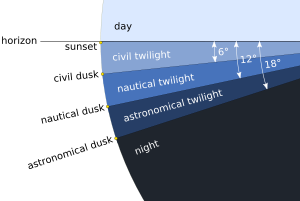I love this questions, it really captures the imagination! What a great world.
Mushrooms don't photosynthesize. There could be giant fungal forests!
To evolve non hibernating land mammals that don't fly (ie humans), you would need a land mass that includes every longitude. The easiest would be a land mass that just includes one of the poles - it could go all the way around the equator, but that seems less likely.
Rather than being constantly on the move, I think people would stay for years in cities they built the day before. They would migrate throughout different times of the day. Communities could send their members back and forward in different times of the day, depending on their needs. (Need to start setting up the next city - send a group forward towards dawn! Need more food that is harvested in dusk - send them back!)
I particularly love the area just after the sun has set. At first I thought that people would not really spend much time in dusk, but the world is still fairly warm, so I think that many people would still be harvesting all the seeds that were planted in the day.
Did you know there are three different types of dusk?
Civillian dusk (The sun is 6 degrees below the horizon): Civillian dusk is the point at which we need artificial light to read. Objects are still visible. Civillian dusk occurs for 6 degrees ~ 127 of our days.
Nautical dusk (12 degrees below the horizon): objects and the horizon are no longer visible. I think this woul be the time for the serious predators.
Astronomical dusk (18 degrees below the horizon): The sun no longer interferes with astronomical observations - important for science!

